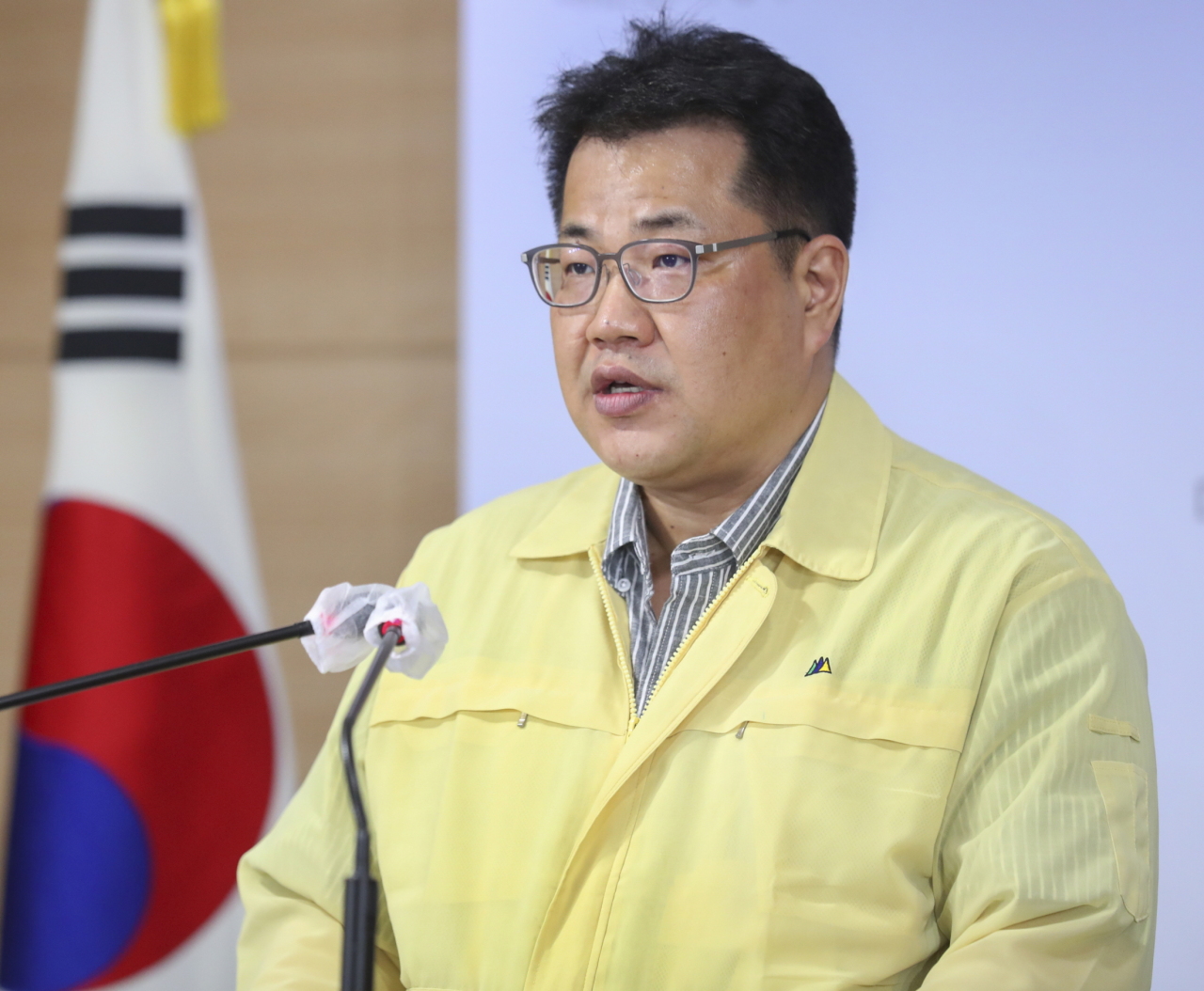
Ministry of Health and Welfare`s spokesperson Son Young-rae speaks during a press briefing Sunday afternoon. (Ministry of Health and Welfare)
It is best to stay home this year for Chuseok, health officials said on Sunday, warning that the yearly mass migration of people around the country for family events during the national holiday could spark new COVID-19 outbreaks.
“Tens of thousands of people traveling at the same time can prompt nationwide transmissions and give rise to significant outbreaks,” Son Young-rae, spokesperson for Ministry of Health and Welfare, said in a news briefing. “To protect vulnerable family members, staying home is strongly recommended this fall.”
Son added that while the case trend has “demonstrated a steady decline,” it was too early for people to let their guards down. “Unfortunately, the COVID-19 situation is not projected to come completely under control in three weeks’ time for the holiday.”
Ahead of the six-day national holiday slated for Sept. 30-Oct. 4, the Health Ministry said it would limit sales of tickets for the KTX trains and enforce physical distancing at motorway service stations.
Prime Minister Chung Sye-kyun, who heads the government task force for COVID-19 response, urged Koreans to avoid outings and travel over the big holiday earlier the same day. “We ought to remain alert over dangers of the coronavirus,” he said.
The Korea Centers for Disease Control and Prevention reported 152 more confirmed cases of the novel coronavirus on Sunday, with the cumulative number of cases now totaling 21,177. The daily infection tally by the state health agency reflects the cases recorded during the previous 24 hours.
Korea’s new confirmed cases figure was under 200 for the fourth straight day on Sunday on the back of tighter controls, after peaking at 441 on Aug. 27.
The numbers rose again in the capital and the adjacent areas last month following a series of infection clusters identified at churches -- most notably the Sarang Jeil Church in Seongbuk, a northern Seoul district. Rev. Jun Kwang-hoon, who is the spiritual leader of the Seoul church’s roughly 4,000 worshippers, tested positive for the virus two days after staging a rally attended by hundreds.
On top of the outbreak among churchgoers, Korea is battling smaller clusters emerging all over the country with health authorities unable to locate the sources of infection for an increasingly greater proportion of them. For about 1 in 4 cases confirmed in past two weeks, the transmission route was unknown. Some of the latest COVID-19 hotspots include food outlets such as cafes, restaurants and pubs.
The government on Friday decided to extend the stronger measures that came into effect three weeks ago to rein in the spread in Seoul. Under the new guidance, coffee and restaurant chains can offer to-go orders only and indoor sports facilities have been shut down. Visits to nursing homes, which were allowed again in July, have been limited as well.
Despite counting fewer cases this week, hospitals remain vigilant over more patients falling seriously sick from the disease. The number of patients with severe or critical cases of COVID-19 jumped to 163 on Sunday, which is the highest since the disease was detected in the country in January. The Health Ministry’s data show there are only four ICU beds available in Seoul area as of Saturday.
The number of people in Korea who have died from COVID-19 increased by one to 334. The overall death rate stands at 1.58 percent, which is much higher for those 80 years or older at 19.7 percent.
The number of recoveries reached 16,146, up 137 from the day prior. Since late June, the qualifications for COVID-19 recovery here have been adjusted to allow patients who remain without symptoms for 10 consecutive days since diagnosis to be released from isolation.
By Kim Arin (
arin@heraldcorp.com)




![[From the Scene] Monks, Buddhists hail return of remains of Buddhas](http://res.heraldm.com/phpwas/restmb_idxmake.php?idx=645&simg=/content/image/2024/04/19/20240419050617_0.jpg&u=20240419175937)

